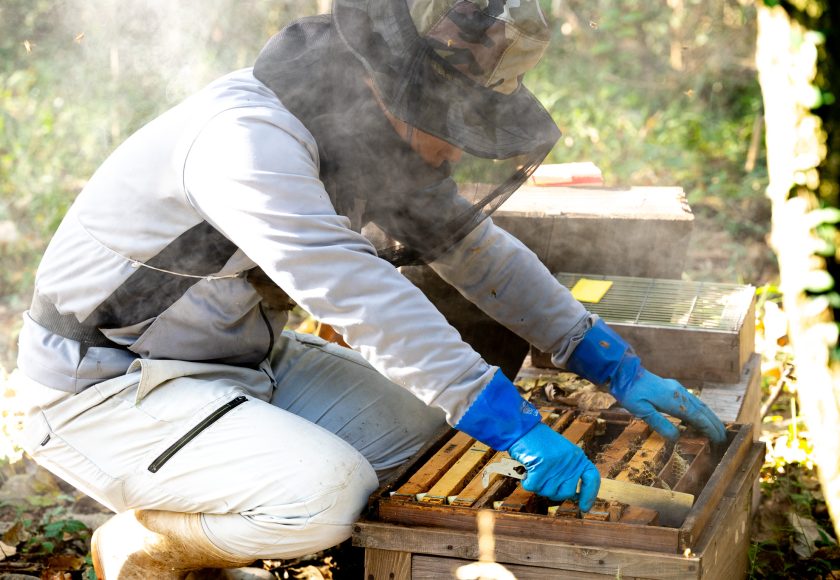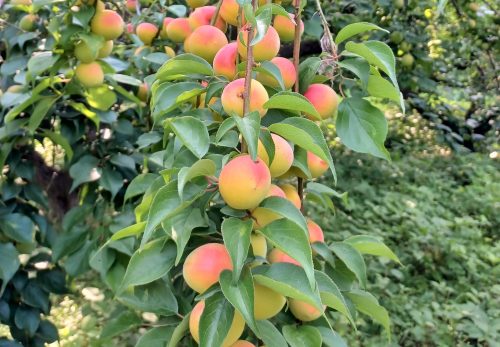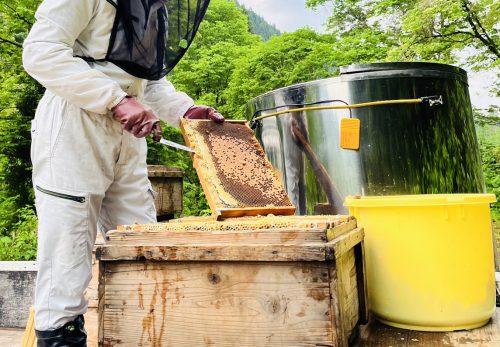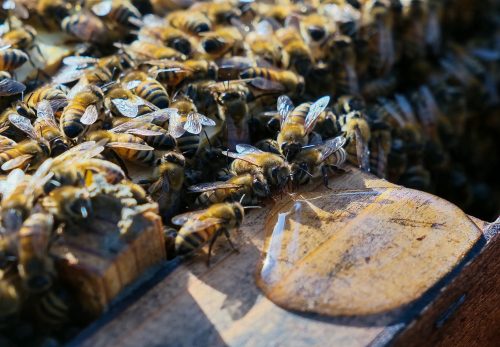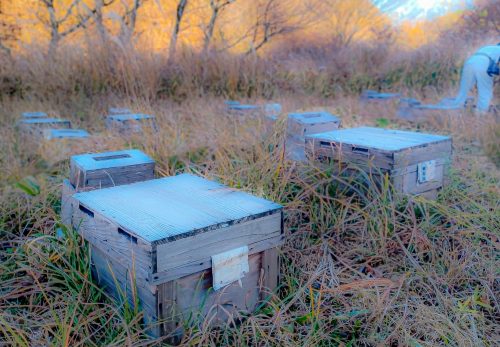Before the full onset of winter, we conducted a final inspection of the beehives to ensure that the bees can winter safely.
This time, we will introduce that process!
During the final inspection of the beehive before winter, we mainly check the following three things.
Adjustment of the number of rooms in the nest structure.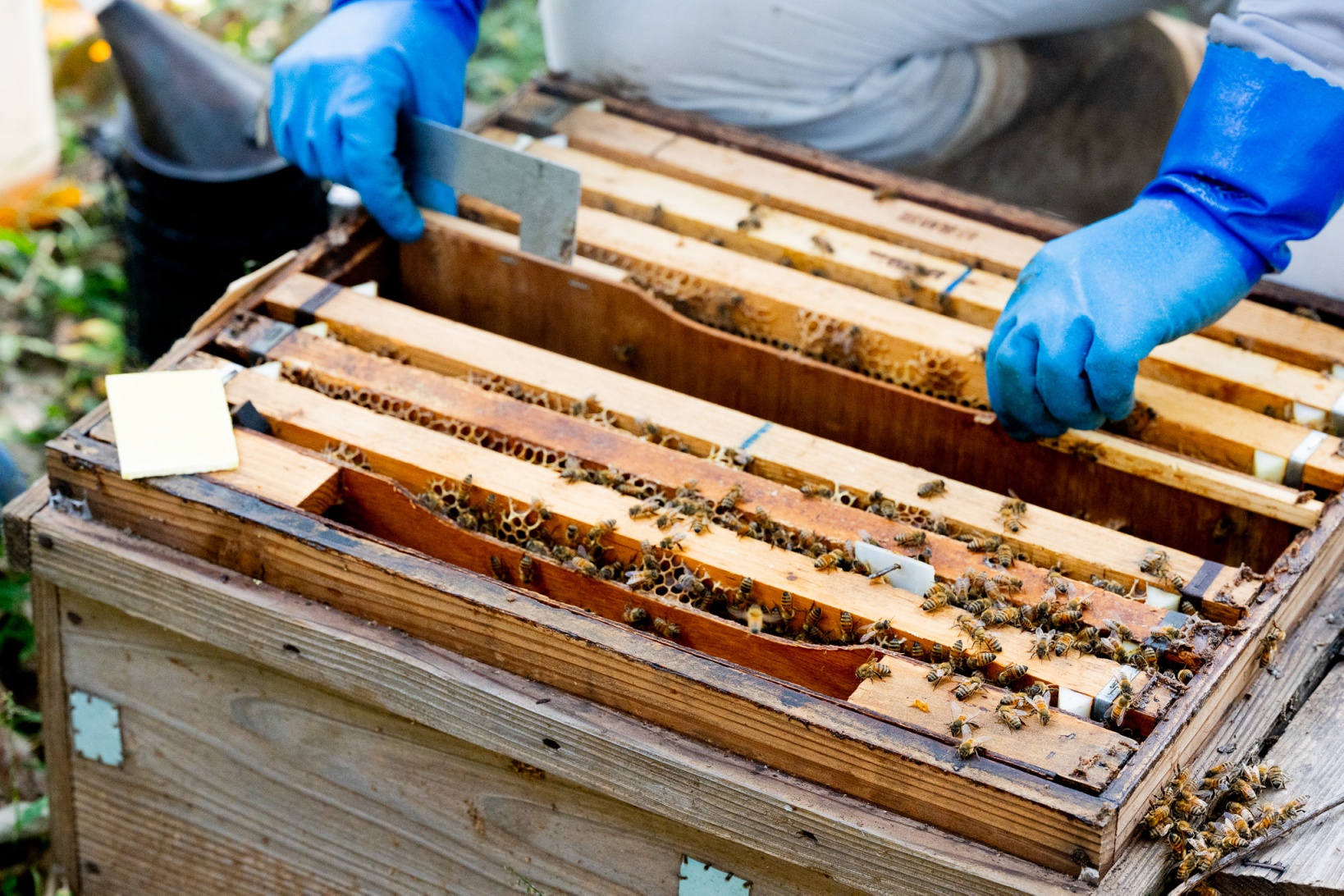 Necessary tasks for winter preparation include adjusting the number of frames (rooms) in the hive.
Necessary tasks for winter preparation include adjusting the number of frames (rooms) in the hive.
When the cold becomes severe, honeybees huddle together to maintain temperature, forming a mass called a "bee ball".
Therefore, if the hive is too large, it becomes difficult to clean the interior and manage the temperature, putting a strain on the bees.
Strong colonies with many bees can manage the temperature well in each room, making it easier to winter with 3 to 4 frames.
Conversely, colonies with fewer bees will have only 1 to 2 frames, making wintering difficult, and there is a possibility they may not survive until spring.
In room construction, we use a board called a restriction version (制限版).
It serves a role similar to a sliding door that partitions a room.
We check each nest box one by one, arranging them into rooms that maintain the optimal density for that group.
Replacement of mite control sheets.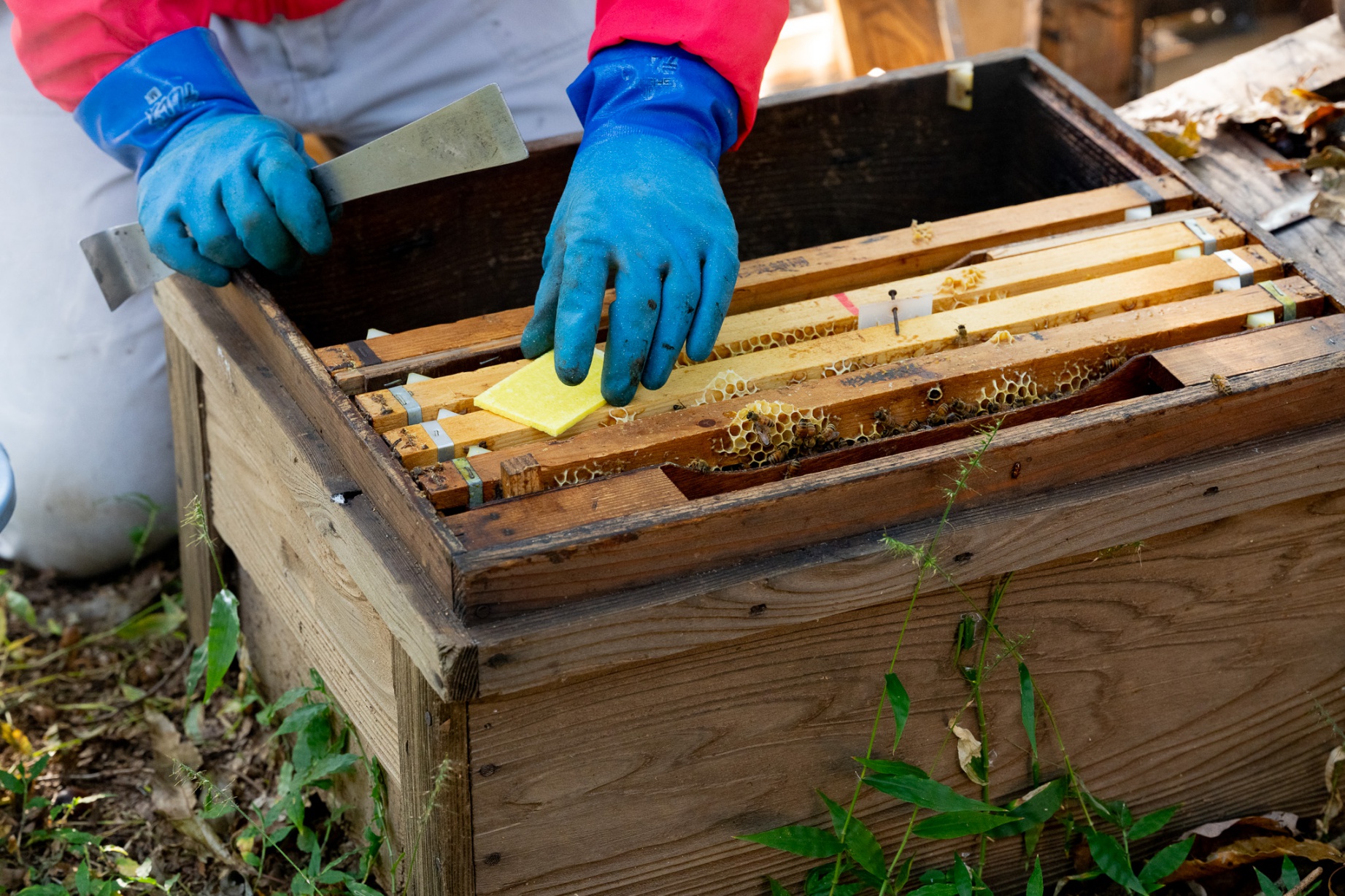 Mite damage is very serious for honeybees.
Mite damage is very serious for honeybees.
During this time, they may seem healthy due to the high number of eggs laid, but there is a risk that the hatched larvae will be infested by mites.
Therefore, it is important to regularly replace mite control sheets and maintain a clean and healthy environment.
Securing sufficient feed.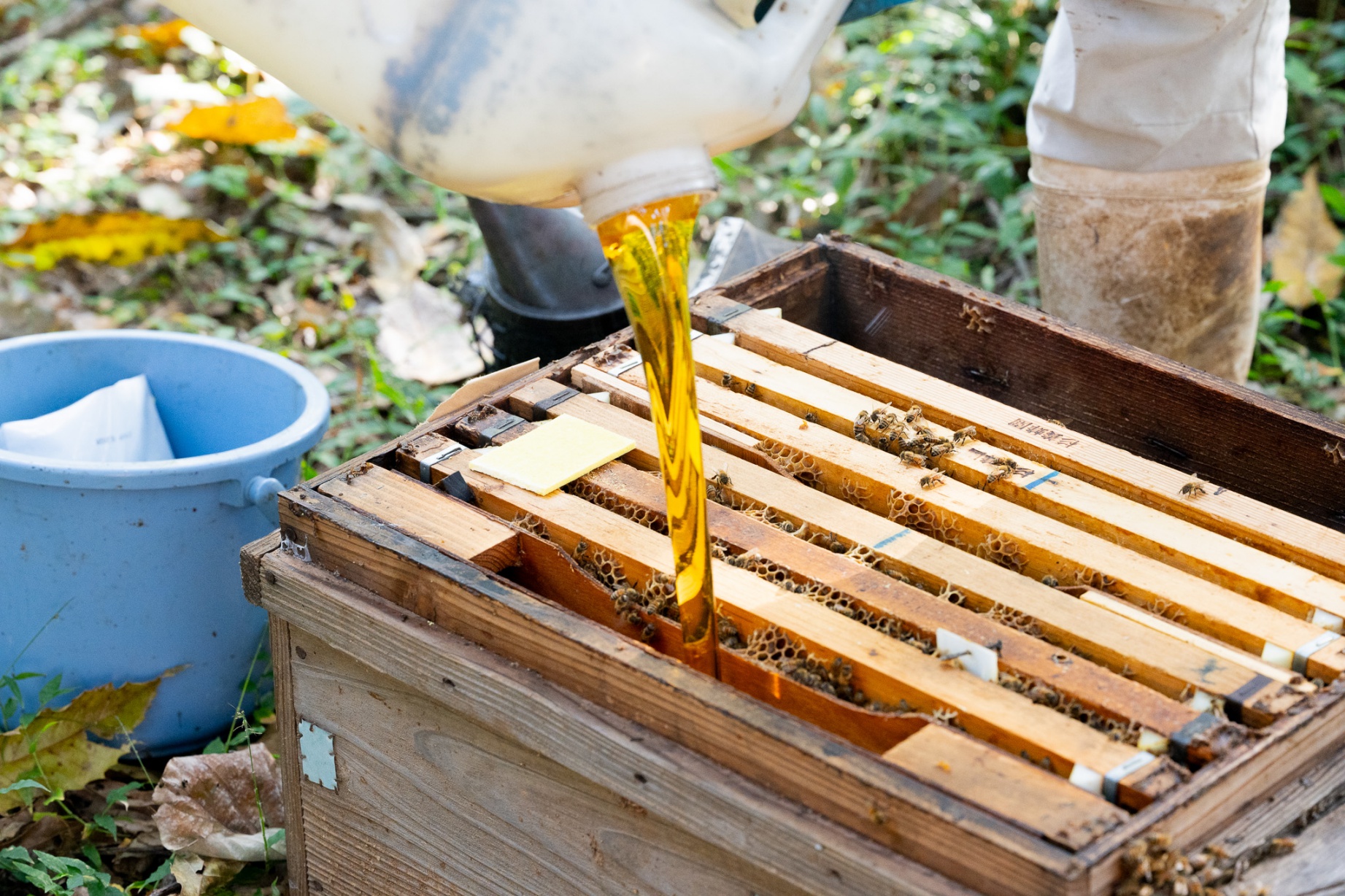 During winter, it is essential to check the amount of honey (food) in the hive frequently, as it is not opened often.
During winter, it is essential to check the amount of honey (food) in the hive frequently, as it is not opened often.
If a shortage is observed, add honey (food) to prepare for surviving until spring.
The best conditions in cold season are:
"The bees are tightly packed into one frame, do not lay eggs, and stay still."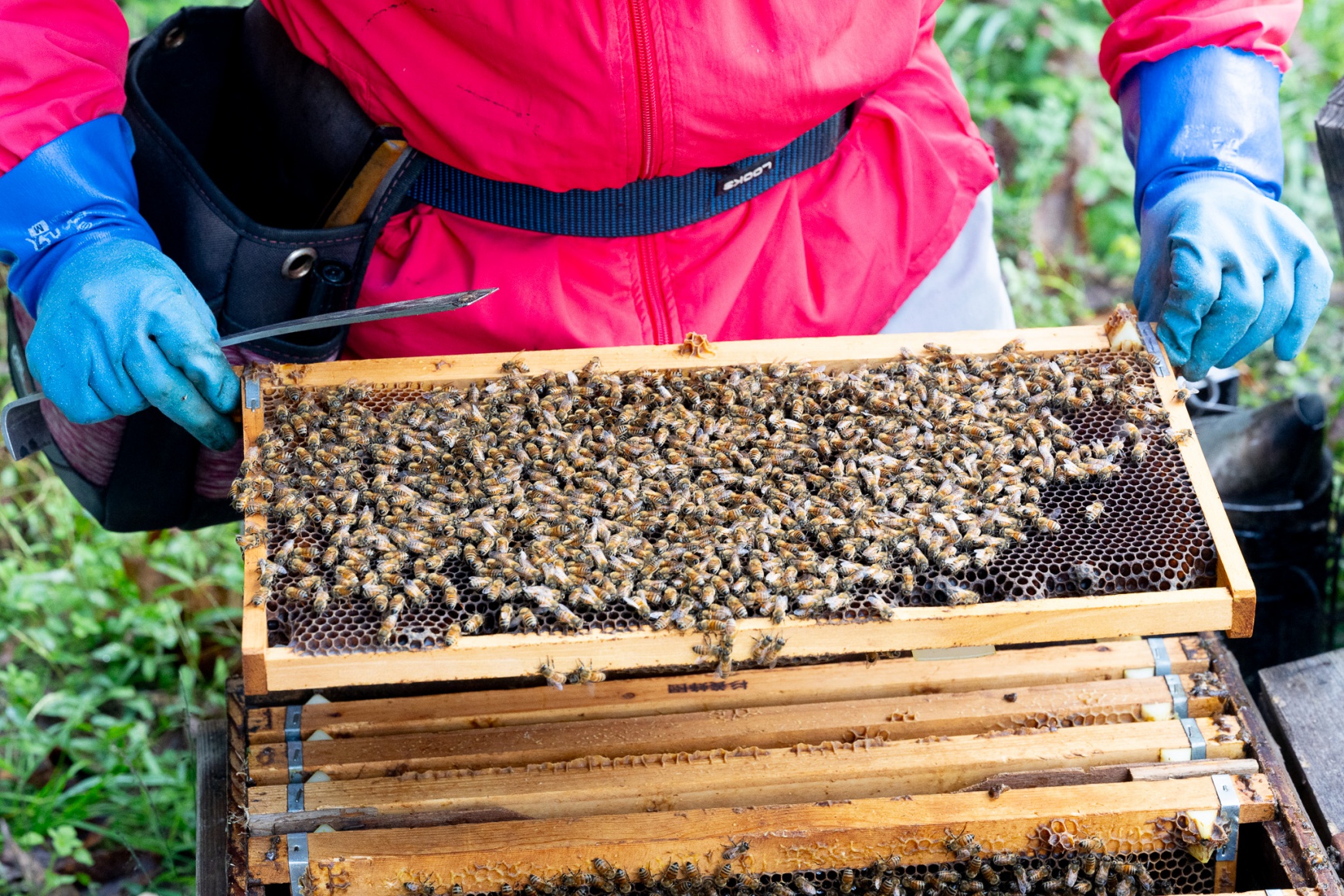 It is very simple, but this will be a significant guideline for wintering.
It is very simple, but this will be a significant guideline for wintering.
In the future, we will install a board at the "entrance" where the bees come and go to prevent as much cold air as possible from entering, and we will insert insulating paper in hives with particularly few bees, preparing for the cold waves that come every year.
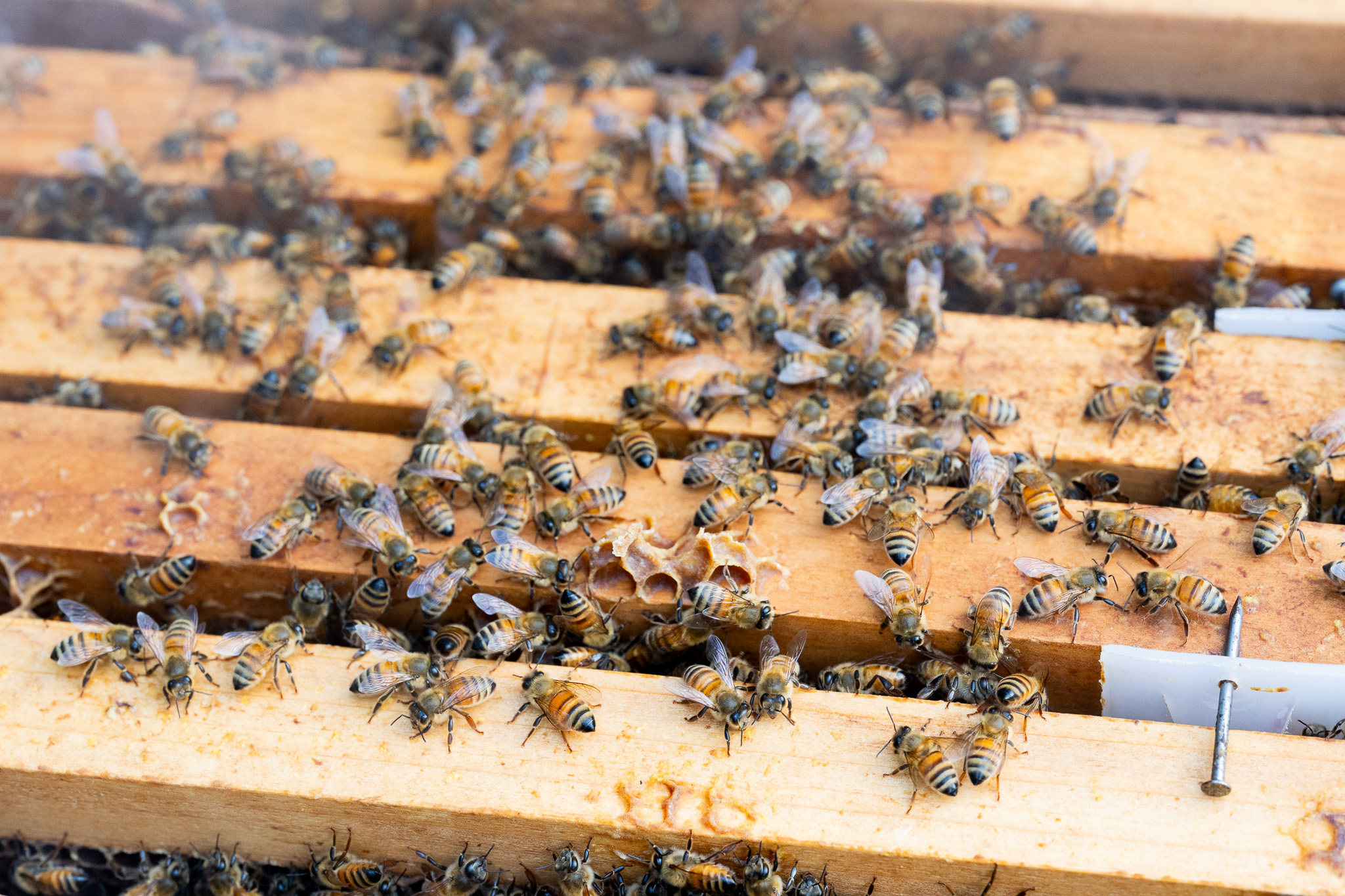 In order to help the bees overcome the harsh cold, I will pay attention to each beehive and strive to ensure that they can safely welcome spring!
In order to help the bees overcome the harsh cold, I will pay attention to each beehive and strive to ensure that they can safely welcome spring!

